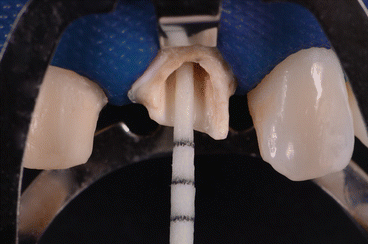Fig. 12.1
The major complaint of this 24-year-old female patient was her compromised esthetics – “I avoid smiling all the time.” There was a history of trauma to maxillary central incisors, which had been endodontically treated and restored with porcelain-fused-to-metal crowns. Patient’s medical history was noncontributory

Figs. 12.2, 12.3, and 12.4
Baseline views of the esthetically compromised crowns
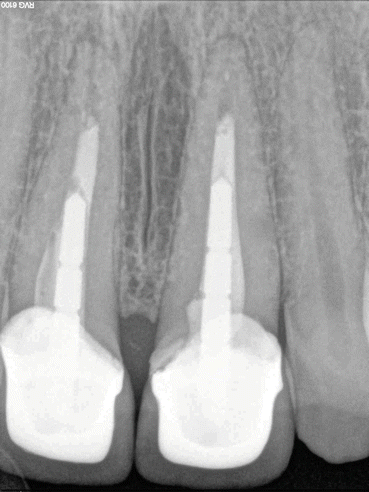
Fig. 12.5
Maxillary central incisors – periapical radiograph of the baseline condition showing enlarged root canals with prefabricated metal posts and deficient root canal treatment
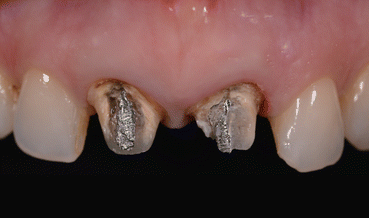
Fig. 12.6
After a waxed-up model was shown to the patient, she approved the treatment plan. The existing porcelain-fused-to-metal crowns and respective luting cement were removed
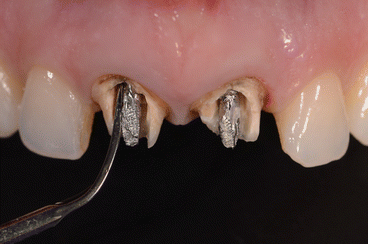
Fig. 12.7
Prefabricated metal posts were removed with an ultrasonic device and a small diamond bur in high-speed handpiece
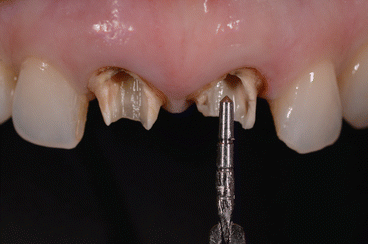
Fig. 12.8
The prefabricated metal post is being removed from the root canal
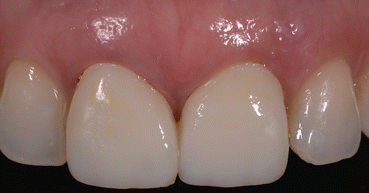
Fig. 12.9
Custom-fabricated provisional restorations were made with a bis-acryl composite resin (Protemp Plus/4, 3M ESPE)
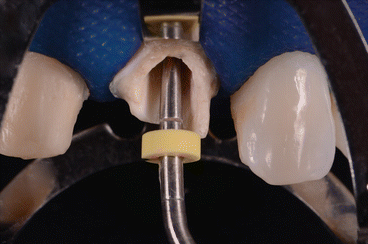
Fig. 12.10
After the root canals were retreated, gutta-percha was removed with the System B Heat Source (SybronEndo) to the root canal length previously determined in the periapical radiograph. Residual gutta-percha was then hand-condensed to leave an adequate apical seal of at least 5 mm
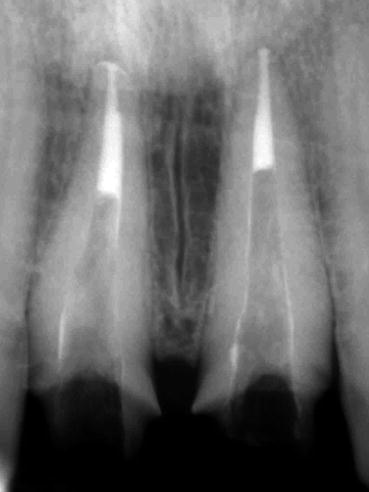
Fig. 12.11
Periapical radiograph after endodontic retreatment
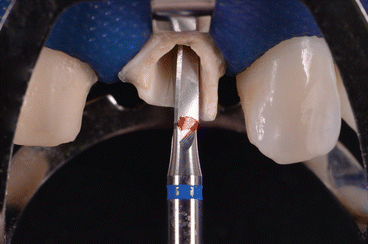
Fig. 12.12
As the root canal had been widened for the preexisting metal post, a wide fiber post was selected without the need to remove more dentin from the root canal walls. The respective drill was used just to refresh the root dentin walls and create a new smear layer
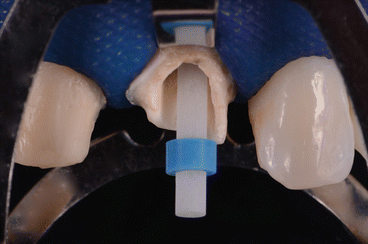
Fig. 12.13
The respective double-tapered fiber post was tried in (#3 RelyX Fiber Post, 3M ESPE) and a radiograph taken to check the adaptation to the root canal
Stay updated, free dental videos. Join our Telegram channel

VIDEdental - Online dental courses


